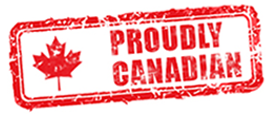Strategic Alignment is Critical to High Performance
In business, we measure success by the bottom line; or as I’ve heard some people put it, “we keep score with dollars.” When you get right down to it, profit represents the combination of drive, work, and efficiency we call high productivity. Staying busy isn’t enough; we have to stay busy at what matters, in ways that move us toward well-defined goals and objectives.

I’ve dedicated my 20-year career to helping my corporate clients improve employee performance and execute on strategy. I’ve stressed the value of time management skills, productivity training, to-do lists, task triage, and avoiding distractions. I’ve pointed out how individual empowerment, effective teamwork, and a positive workplace atmosphere all contribute to the kind of employee engagement that yields high levels of both productivity and profit. All of these topics are important.
But sometimes you have to go back to basics to really understand some key principles that lay the foundation for all work that occurs in a company—a basic business reality that, while often forgotten, governs all levels of productivity at work—the need for strategic alignment.
Top to Bottom
Good strategic alignment consists of practices that connect organizational strategy with employee performance as fully and as directly as possible. When you properly align your organizational structure, all employees act as strategic enablers of business, company policy, mission, and vision, working from the same standards toward the same ends. This can only happen when upper management willingly shares its goals with everyone and sets up procedures to make sure everyone stays on track.
Once-a-year performance reviews just don’t cut it. On the other hand, too much day-to-day control can become micromanagement—the exact opposite of productivity. In any case, performance reviews relate specifically to one person’s job, not company strategy as a whole. So how do you find a happy medium? How do you connect each employee’s execution of their work to the organization’s overall vision, in order to create a comfortable level of strategic alignment resulting in profit, growth, and all-around business success? How do you ensure that each employee, sitting at his/her desk, is working on exactly what they should be doing to drive successful strategy execution?
Communication, Education, and Oversight = Alignment
A successful alignment effort includes three components: communication, education, and oversight. Like a three-legged stool, all three legs support and reinforce the others. Weakness or failure in any destabilizes the entire effort; however, strength in all three provides a solid structure upon which to build.
Communication
Like so many other things, successful alignment starts with good communication. Suppose your boss gestures vaguely at the horizon and says, “Our goal is to climb that mountain over there.” Which mountain does he mean? Does he have a method and schedule in mind? You’d better ask if he doesn’t clarify. It surely won’t help the bottom line if you end up climbing the workplace equivalent of Pike’s Peak in a month when he wanted you to tackle Everest in a week.
That may sound a little silly, but I know of something similar (though much less extreme!) that happened to an archaeologist as he directed the survey of a gas pipeline corridor. One day, a crew misread a map and surveyed the wrong three-mile segment. The field director was at fault, because he didn’t make his strategy clear enough to the crew leader. Luckily, the team recovered from the error, and went on to finish the project on time and under budget. If not for this one mistake, though, they might have finished days earlier—saving the company many thousands of dollars.
As a leader, you have a duty to share your organization’s strategic goals with your team members as plainly as possible. This includes everything—from long-term targets that may take years to achieve—right down to the daily adjustments that keep you on course. While you don’t necessarily have to reveal every little detail, the broad outlines of the organization’s strategic goals should be transparent to all involved. That way, they can clearly see the general strategy, where they fit into its framework, and how their efforts help move everyone closer to the final destination.
Most of us have worked in jobs where we had no idea where we were going or whether what we did even mattered. A business can survive this; it may even make money at it. But you can rest assured employee productivity will just limp along, uninspired at best. If you keep your team members in the dark, you run the risk of creating unhappy drones who either waste their time or sit muttering in their cubicles and guarding their staplers, like poor Milton in the movie Office Space. And he ended up burning the building down.
So communicate with your team members clearly and completely, lest you figuratively “burn down” your own business. Give them all the information and other tools they need to get the job done. Let them ask any and all questions they deem necessary, and answer them patiently. Then make sure you ask a few of your own to test their understanding of your goals. Along the way, take advantage of all available methods of communication: team meetings, email, and video conferences.
On a broader scale, communicating your basic organizational strategy can be as easy as publishing a brief mission/vision statement on the company intranet, holding an all-employee meeting, or circulating a memo for everyone to literally sign off. Most businesses give new employees a handbook outlining company policy, sometimes in exhausting detail. So invest even more time orienting everyone to the company’s strategic goals as well—especially when there are changes in direction.
In most respects, strategic alignment is a vertical, top-down process. But a horizontal component should also exist in any organization consisting of two or more teams or departments. Goal sharing between groups keeps everyone on the same page. What you do doesn’t happen in a vacuum: it affects others. Without horizontal communication, some people might lose track of what truly matters. My father is a retired Colonel in the U.S. Air Force, and I’ve heard stories of military leaders withholding much-needed items from soldiers on the front line for bureaucratic, often stupid reasons. They became so focused on operating their personal fiefdoms they forgot the overarching organizational goal: to win the war.
Goal sharing breaks down “silos” that keep groups from sharing information and integrating successfully with each other. Furthermore, if each group knows the other groups’ goals, they can work together to identify areas of overlap and then devise ways to eliminate redundancy and save the company money.
Education
A smart organization provides its employees with basic strategic guidelines right along with their procedural and occupational training. This falls under the heading of giving your people the tools they need to do their jobs right. Strategic goal education doesn’t have to take a ridiculous amount of time. People need to understand where they fit in the grand scheme of things, and why their work matters, so connect the dots for them. This demonstrates their value to the company, which will motivate them and hopefully increase their engagement level. Make it clear that, from the youngest intern to the Chairman of the Board, everyone’s work has importance if it moves the organization toward its strategic goals.
Strategic education can encompass a wide range of methodologies, in a number of areas important for alignment. For example, mentoring can achieve the same ends as orientation-level education, with the mentor passing on strategic goals during the process of showing a new employee the ropes. If your company’s goals are in a state of flux, “just in time” training can teach people new skills on the fly and help them adjust to rapidly changing objectives.
In more stable work environments, you’ll still need to schedule the occasional event to pass along strategic adjustments and other updates. The town hall meeting offers an excellent venue for doing so. Companies like Apple, AT&T, and Microsoft have leveraged this format by taking advantage of modern teleconferencing technology. I presented a keynote at Cisco using their telepresence room, and it was amazing talking with employees around the globe.
Last—I have to say it—continued professional development helps your people keep their heads in the game. Cutting training in times of a weak economy is a bad idea for employee motivation, growth, and retention. Goal-oriented training becomes more important than ever during a recession, especially when you have no money available for raises. Reminding people about the importance of your investment in them can help you retain workers who might otherwise go elsewhere when things turn around.
Oversight
Back in the 1980s and 1990s, we used to talk about SMART objectives: they had to be Specific, Measurable, Attainable, Relevant and Timely. Now we’ve gotten SMARTER, adding Evaluate and Reevaluate to the end of the acronym. Individual workers are, in essence, constantly justifying their return on investment (ROI) by demonstrating their contributions toward achieving individual, team, and organizational goals. Therefore, once you’ve defined the company direction, and provided the tools and training, you must now check in regularly to ensure employees are spending their time executing effectively.
For example, my assistant Becca sits at her desk working hard for hours a day. I don’t look over her shoulder or even talk with her daily, as I’m often out of town. So as her manager, how do I know I’m getting the best possible ROI out of her? How do I know that what she’ll be working on in six months will achieve my objectives? Training and communicating my goals aren’t enough; I also need to make sure Becca’s execution stays on target.
I have to give her the space and time she needs to work on her tasks, if I want her to be a strategic enabler of my business (versus running around putting out brushfires and never having time to do anything important). But we must also check in on a regular basis, so I can ensure she’s headed in the right direction.
Mutual trust and feedback help here, as long as they really do flow in both directions. But you’ve probably heard the old saying that goes, “Trust, but verify.” This requires some sort of measurement system that lets both you and your employees track their performance. We use the Tasks feature in Outlook. Regular written reports might work, and informal weekly, monthly, or quarterly reviews are much better than yearly. At a more high-tech level, you could implement some sort of software tracking system. For example, shared online workspaces have become common, allowing easy tracking of both an individual’s day-to-day productivity and their progress toward specific objectives and projects.
The Bottom Line
The word “LASER” is short for Light Amplified by the Stimulated Emission of Radiation. Basically, a laser generates a special kind of light. Normal light bounces in all directions, but a laser makes the light waves align in one direction only. Scientists call this “coherence.” The coherent light beam emerges from the laser so tightly focused that, if powerful enough, it can slice through steel in the blink of an eye.
The right combination of communication, education, and oversight encourages workplace coherence—a force multiplier that yields a whole greater than the sum of its parts. Employees slot easily into teams that link together readily to advance company strategy with a minimum of wasted energy—producing brilliant, focused light—rather than useless heat and noise.
When everyone knows exactly where to go and how to get there, making decisions becomes simple and fast. Taken together, the individual “parts” move with one unified purpose—like a school of fish or flock of birds—as a production machine.
Alignment of this nature removes bottlenecks, breaks down information silos, cuts redundancy, limits confusion, and maximizes productivity. To work well, it requires a high level of coherence, composed of the proper measures of communication, education, and oversight. Needless to say, one size does not fit all. How much of each ingredient you should add to your “alignment recipe” depends on the nature and size of your organization. Determining the right amounts of each requires careful testing, undertaken with a clear-eyed willingness to learn.
What To Do When There’s Too Much To Do, my brand new handbook for maximizing workplace productivity without running yourself into the ground is now available. Buy your copy at Amazon, Barnes and Noble, or 800CEORead and email your receipt to WhatToDo@TheProductivityPro.com for special bonuses by author friends of Laura Stack. Visit www.TheProductivityPro.com/WhatToDo for complete details.
Make it a productive day!™
© Copyright 2012 Laura Stack. All rights reserved.
© 2012 Laura Stack. Laura Stack is a personal productivity expert, author, and professional speaker who helps busy workers Leave the Office Earlier® with Maximum Results in Minimum Time®. She is the president of The Productivity Pro®, Inc., a time management training firm specializing in productivity improvement in high-stress organizations. Since 1992, Laura has presented keynotes and seminars on improving output, lowering stress, and saving time in today’s workplaces. She is the bestselling author of three works published by Broadway Books: The Exhaustion Cure (2008), Find More Time (2006) and Leave the Office Earlier (2004). Laura is a spokesperson for Microsoft, 3M, and Day-Timers®, Inc. and has been featured on the CBS Early Show, CNN, and the New York Times. Her clients include Cisco Systems, Sunoco, KPMG, Nationwide, and 3M. To have Laura speak at your next event, call +1 303-471-7401. Visit www.TheProductivityPro.com to sign up for her free monthly productivity newsletter.
When it comes to finding reliable partners in the Canadian market, Scott’s Directories is an invaluable resource. The direct...
Read MoreA Western Directory can significantly enhance your B2B marketing strategy. By leveraging detailed data, you can identify potential...
Read MoreFinding the right healthcare facility is crucial for quality care. The list of hospitals in Ontario provides an extensive director...
Read More























